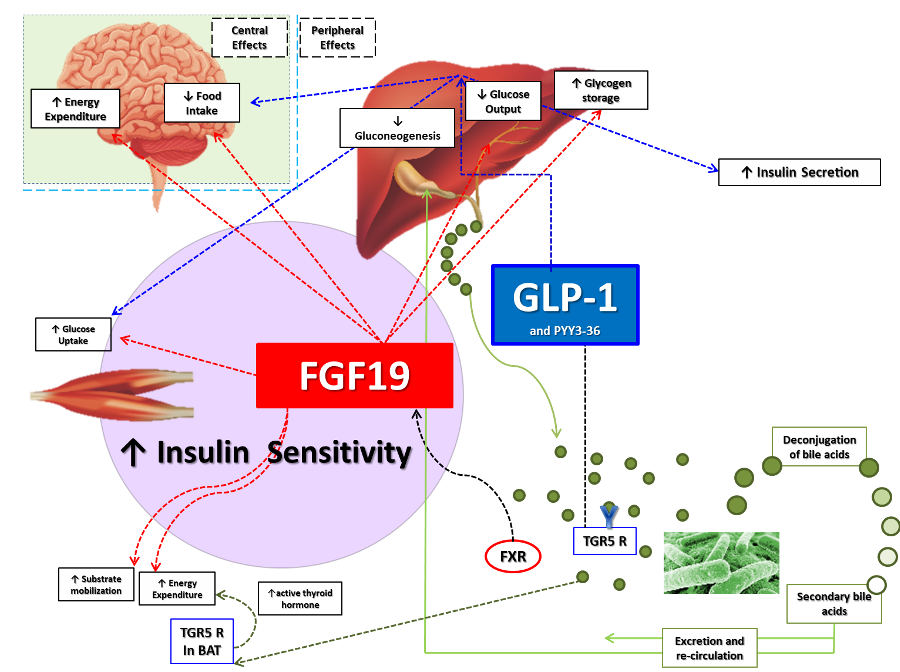
Figure 6. Schematic diagram illustrating the complex cross talk between BAs, gut hormones, FGF-19, and the microbiome. BAs are important regulators of energy balance and glucose metabolism, primarily via the FXR and the TGR5. The trans-intestinal BAs flux activates intestinal FXR, inducing synthesis and secretion into the circulation of the ileal-derived enterokine FGF-19. FGF-19 can improve glucose tolerance by regulating insulin-independent glucose efflux and hepatic glucose production. FGF-19 can also increase energy expenditure with its central and peripheral effect in the adipose tissue. BAs acting via TGR5 stimulate L-cell secretion of GLP-1 (and PYY) then enhancing insulin secretion acting on β-cells. TGR5 activation in muscle and brown adipose tissue promotes the conversion of inactive thyroxine into active thyroid hormone inducing thermogenesis. BAs can reduce food intake centrally through FGF-19 and anorectic gut hormones. BAs also regulate gut microbiota composition. BAs are actively reabsorbed from the terminal ileum and returned via the portal circulation to the liver. A small percentage of BAs are deconjugated by gut bacteria, forming secondary BAs, which are reabsorbed or excreted in feces. Red dotted lines: FGF-19 effects. Blue dotted lines: IGF-1 effects. Green lines: BAs circulation.
